Amongst a collection of items belonging to Dorset County Museum, that were brought to the Dorset History Centre for conservation, were two music books. One belonged to Thomas Hardy’s father, and the other his grandfather (who were both also called Thomas). These books are fascinating examples of home-made bindings, with atypical sewing and making use of materials found around the house.

The music book belonging to Hardy’s grandfather is particularly interesting. Due to the damage to the binding, it was necessary to completely disbind it before conservation work could begin. This allowed a close examination of the paper and, although the sewing thread had broken in many places, it was possible to trace the original sewing pattern.
It became apparent that four leaves (or two bifolio: meaning a piece of paper that is folded in half to create two leaves) had come from one sheet of handmade paper. Separating the sections, each bifolio could be matched with another to create a whole sheet. Viewed on a light box, the Britannia watermark can be seen and one half of the watermark was found on every bifolio in the textblock.

It appears that a supply of, most likely foolscap, paper was bought, and each sheet was cut in half. Six of these cut halves were grouped and folded in half together to make one section. Each section was trimmed independently before all the sections were all sewn together. The sewing itself is extremely unusual. A future blog will explore different types of sewing, but this is not a standard method and has never been seen before at the History Centre. It implies the book was sewn by someone unfamiliar with bookbinding techniques.
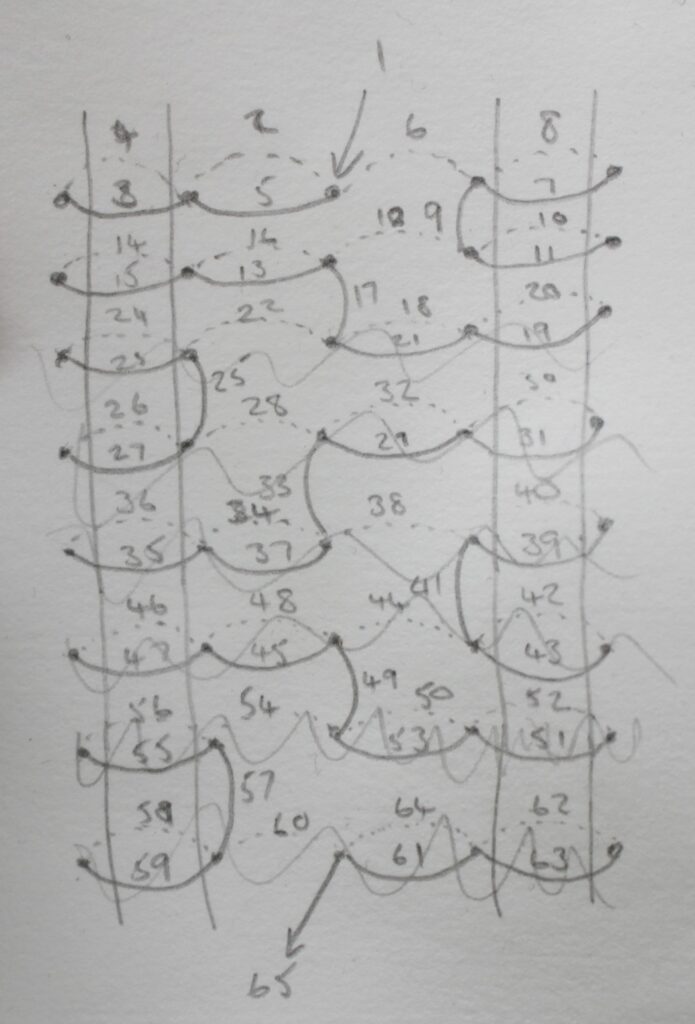
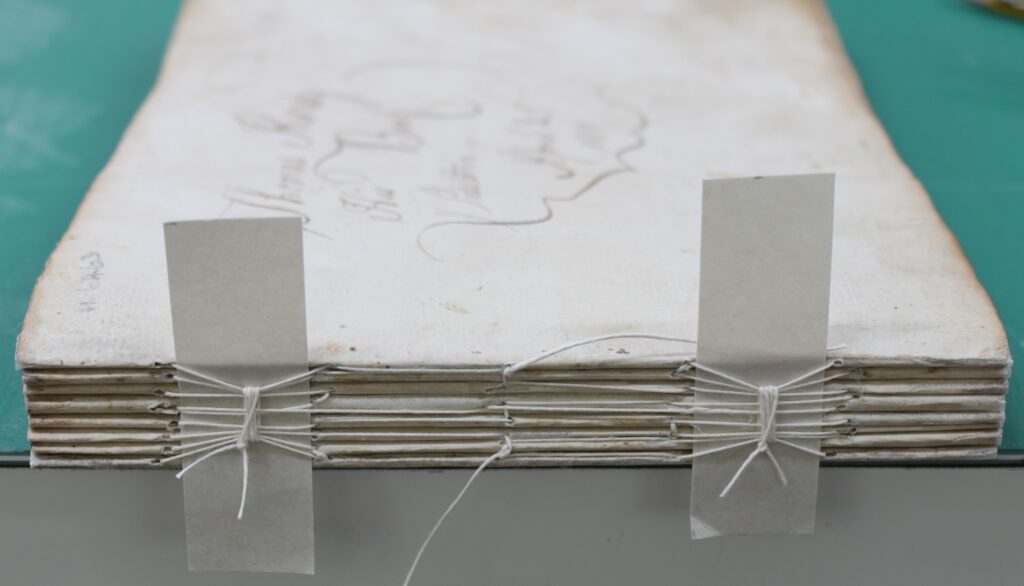
The primary cover is made from thick paper laminated with half of an old parchment document, which can just be seen in the spine section inside the cover. The sewing supports were also cut from the document.
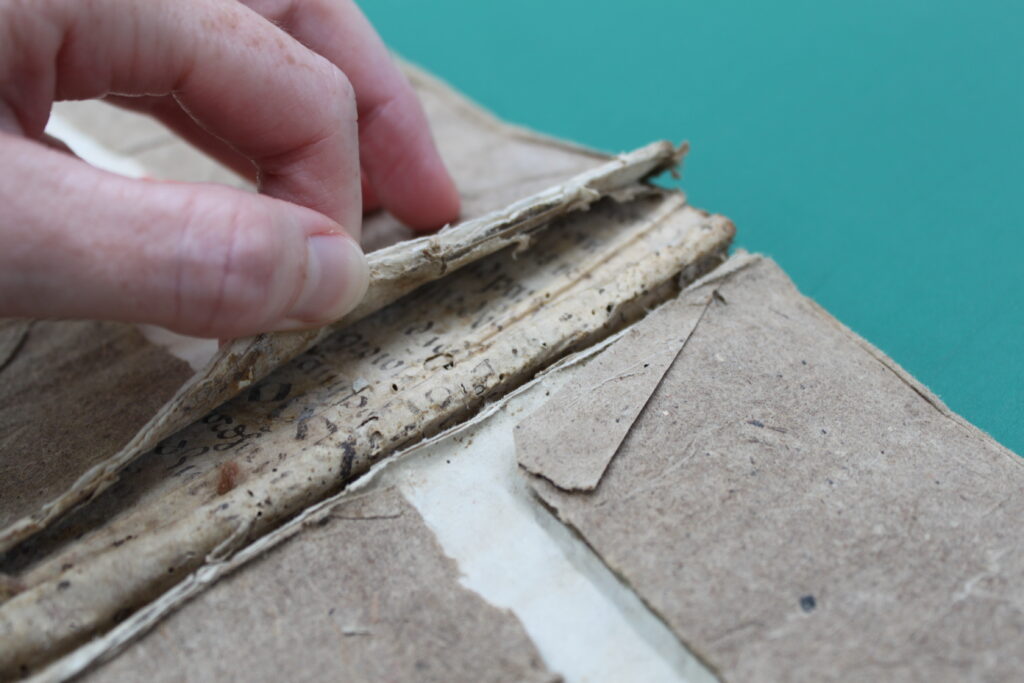
The second half of the parchment was repurposed into a wrapper, which was folded around the binding and sewn into place. Whilst temporarily removed from the binding, the opportunity was taken to digitise the document.
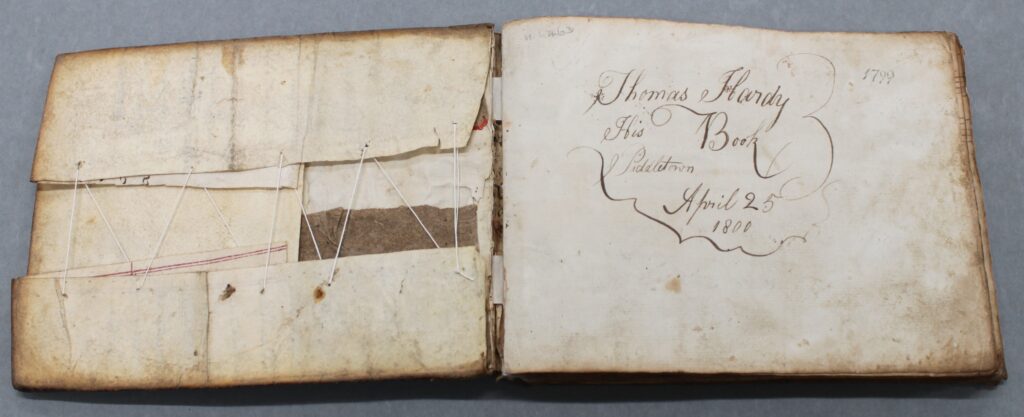

To conserve the volume, all the components were cleaned and paper repairs were carried out to the textblock, which was re-sewn in the original pattern onto new parchment supports. The textblock was returned to its primary cover and the parchment wrapper was replaced. Any original material that could not be reused was saved within a polyester pocket which will be kept with the volume.

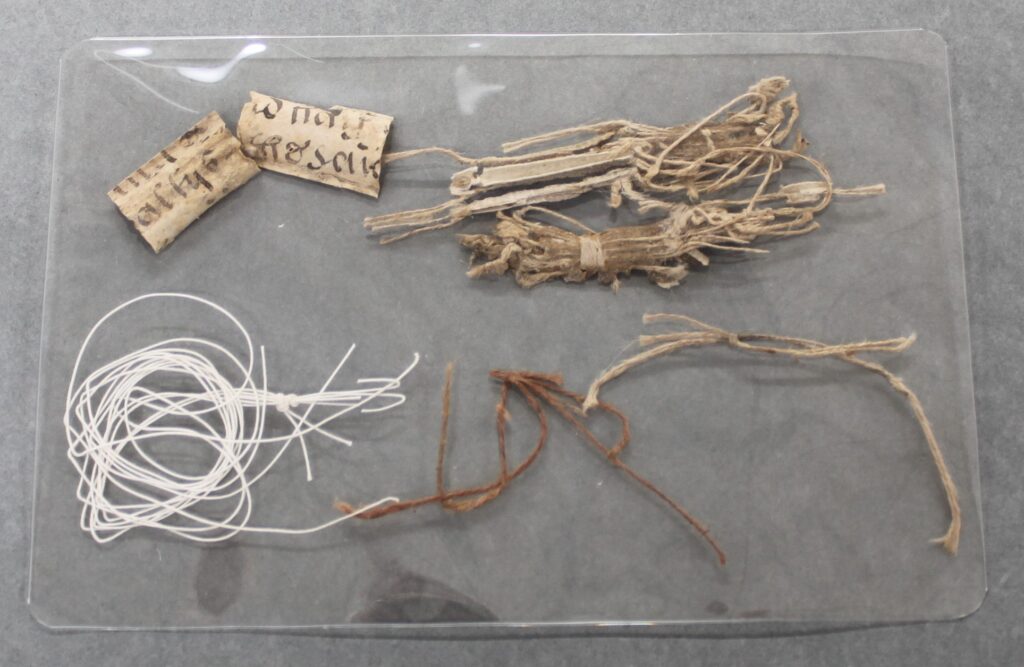
The music book belonging to Hardy’s father has a more traditional binding technique. Unfortunately, this volume had been exposed to damp at some point in its past and the paper had become soft and fragile. The fore-edge of each leaf needed supporting with a thin, transparent Japanese paper to prevent any further loss.
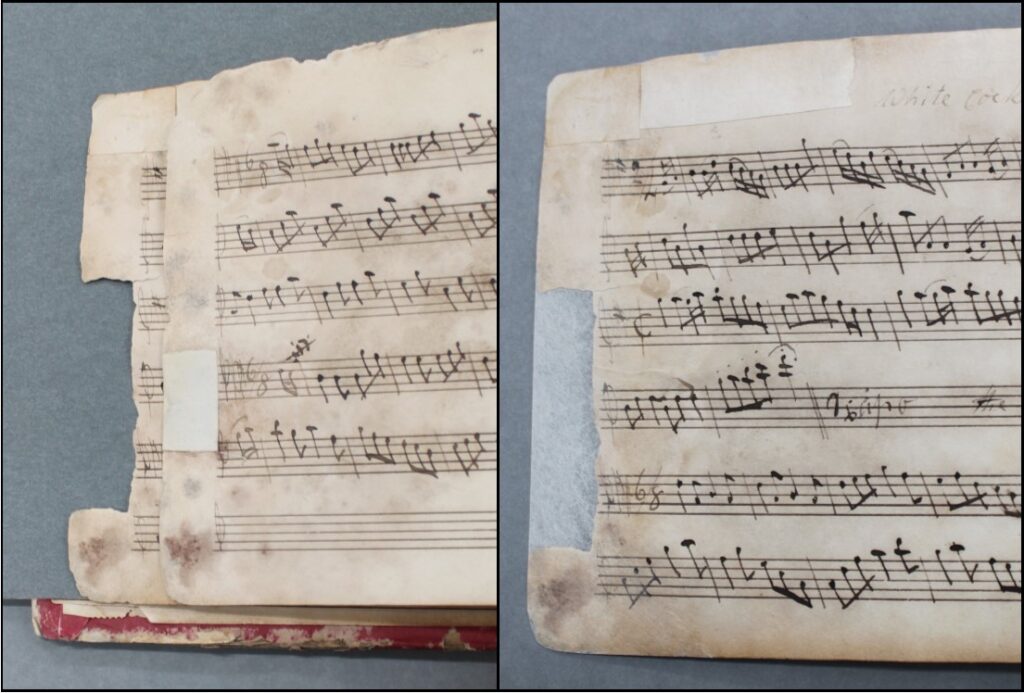
The boards of the binding had suffered the same damage, and these had been supported by paper that, like the parchment indenture, was also reused. Whilst repairing the boards it was possible to ease open parts of this repair paper and through the wonder of modern search engines a poem was identified, from just a few legible sentences such as “his sweet but awful lyre”, as William Cowper’s ‘Boadicea, an Ode’. Areas of the text were digitised before being repaired, and future researchers may be able to use these images to identify the writer.
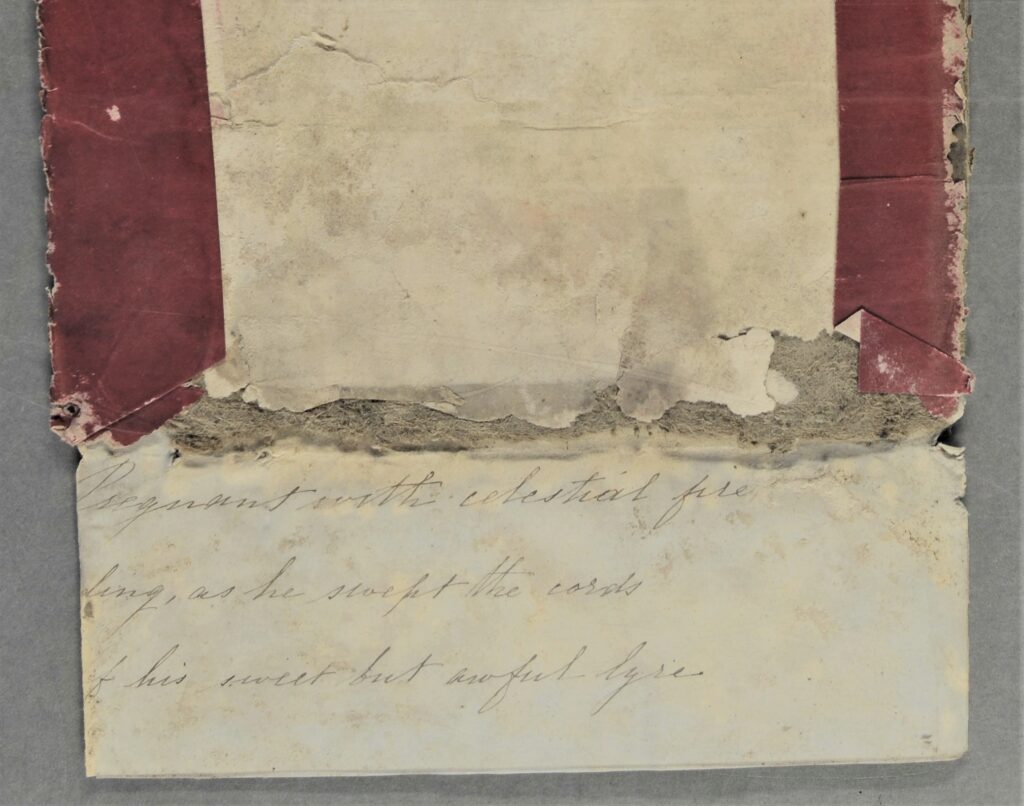
This volume was also re-sewn after paper repairs were carried out, and the fragile board supported. The leather spine was repaired, and the book may now be safely viewed without risk of further damage or loss.
These music books are not only a fantastic example of home-made bindings, they show how conservation can sometimes help reveal hidden secrets, that can shine a small light upon the lives and interests of the makers and users of these volumes.


I have often thought a book of Hardy’s/Dorset music might sell well in the shop.
There is a small printed book in the collection. Maybe you could produce a facsimile for sale? I’d buy one!
Hi Hannah – thanks for your comment. Any decision to reproduce such material would have to be made by Dorset County Museum (as the owners of the Hardy collection). Given their current activities, it is unlikely they would do anything at the moment, but never say never!
As you say the documents have been digitised. Is it not possible to make the digital files available, even though a facsimile print may be preferable.
Thank-you for your comment. Unfortunately, Dorset History Centre does not own the Hardy material, and therefore any decision to publish the material, either in digital form or hard copy, would have to be made by Dorset County Museum.
The bindings look like typical cheap run work of the period, and done by a binder
The sewing pattern is reminiscent of one which might be used to reduce potential swell, reducing the amount of thread per signature/section.